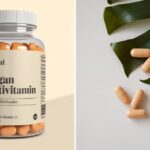Vitamin E oil’s role in skincare extends beyond basic hydration and protection. At this stage, let’s focus on understanding its specific applications, how to choose the right product for your needs, and what makes certain formulations stand out. Whether addressing scars, wrinkles, or irritation, Vitamin E oil offers targeted solutions.
The Science Behind Vitamin E Oil’s Effectiveness
Vitamin E oil’s efficacy lies in its antioxidant and emollient properties. It neutralizes free radicals, unstable molecules that contribute to premature aging and skin damage. Additionally, its moisturizing effect creates a protective barrier that locks in hydration and enhances skin repair processes.
Key Components of High-Quality Vitamin E Oil:
- Tocopheryl Acetate: A stable form of vitamin E that is ideal for skincare.
- Safflower Oil Base: Adds additional hydration and anti-inflammatory benefits.
- Non-Greasy Formulas: Essential for ensuring the oil absorbs easily into the skin without clogging pores.
Solutions for Common Skin Concerns
Scar Reduction
Vitamin E oil accelerates the regeneration of skin cells, making it a popular choice for fading scars. A concentrated formula like DERMA-E Vitamin E Skin Oil is ideal for deeper scars. Apply consistently over several weeks for visible improvement.
Wrinkle Prevention and Treatment
The oil’s ability to fight oxidative stress makes it perfect for reducing fine lines. Combining Vitamin E with a hydrating serum can amplify its effects, keeping your skin firm and youthful.
Sun Damage Recovery
Vitamin E oil works as a soothing agent for skin affected by UV exposure for skin affected by UV exposure. When paired with aloe vera gel, it can effectively relieve and repair sun-damaged areas.
Moisturizing Sensitive Skin
Thanks to its gentle nature, Vitamin E oil suits sensitive skin. It calms redness and irritation, especially when blended with chamomile or calendula extracts.
How to Choose Right Vitamin E Oil
Selecting the best Vitamin E oil depends on your skin type and concerns. Here’s a quick guide:
- Dry Skin: Opt for a pure Vitamin E oil with a thick consistency to nourish parched areas deeply.
- Oily Skin: Look for lightweight, non-comedogenic formulas that won’t clog pores.
- Sensitive Skin: Choose a product with added calming agents like chamomile.
- Combination Skin: A mid-weight oil such as DERMA-E’s blend offers balanced hydration.
Why DERMA-E Vitamin E Skin Oil?
Among the myriad choices available, DERMA-E Vitamin E Skin Oil offers unique benefits:
- Vegan and Cruelty-Free: Perfect for conscious consumers.
- Non-Greasy Formula: Ensures deep hydration without leaving a sticky residue.
- Enhanced Base: The safflower oil base provides additional soothing benefits.
- Dermatologist Recommended: Known for its clean ingredients and visible results.
Tips for Using Vitamin E Oil Effectively
- Patch Test First: Always test the product on a small area of skin first to ensure compatibility.
- Pair with a Cleanser: Cleanse your skin thoroughly before applying Vitamin E oil to maximize absorption.
- Layer with Hydrating Products: Use a hyaluronic acid serum beneath the oil for extra hydration.
- Apply Overnight: Nighttime use ensures optimal repair while you sleep.
Combining Vitamin E Oil with Other Skincare Ingredients
While Vitamin E oil is potent on its own, it pairs excellently with:
- Vitamin C: To boost brightening effects.
- Hyaluronic Acid: For enhanced hydration.
- Retinol: To balance its potency with soothing hydration.
Addressing Myths and Misconceptions
Myth: Vitamin E oil is too heavy for oily skin.
Fact: Non-comedogenic options, such as DERMA-E, are formulated to suit oily and acne-prone skin.
Myth: Results are immediate.
Fact: Consistent use over weeks or months yields the best results.
Explore Your Skin’s Solution
Now that you’re equipped with the knowledge to choose the perfect Vitamin E oil, it’s time to explore specific products and how to use them effectively. Discover recommendations for How to Choose and Use the Best Vitamin E Oil for Your Skin to incorporating Vitamin E into your routine in the next stage.




